Looking for the best high-frequency trading (HFT) prop firms in 2025? Here’s a quick breakdown of the top contenders and what makes them stand out.
- Jump Trading: Known for ultra-low latency systems and decentralized management, offering up to 75% profit splits for entry-level traders.
- Virtu Financial: Operates in 37 countries with advanced tools like Smart Order Router and Best Market Server, providing up to 85% profit splits for consistent performers.
- Tower Research Capital: Focuses on massive data infrastructure (100 petabytes) and independent trading teams, with strong fintech investments.
- XTX Markets: Handles $250 billion in daily trading with automated systems and advanced GPUs, ideal for technology-focused traders.
- Citadel Securities: Dominates U.S. retail trading with predictive analytics and a 90% profit split for top traders.
Quick Comparison
| Firm | Market Presence | Key Technology | Profit Split |
|---|---|---|---|
| Jump Trading | Global, multi-asset | DDN QLC systems, low latency | Up to 75% (entry) |
| Virtu Financial | 37 countries, 235 venues | Smart Order Router, BMS | Up to 85% (mid-level) |
| Tower Research Capital | Global, multi-asset | 100 petabytes infrastructure | Varies by team |
| XTX Markets | Pan-European, FX, equities | 25,000 GPUs, automated systems | Performance-based |
| Citadel Securities | U.S. retail leader | Predictive analytics platform | Up to 90% (advanced) |
Key Takeaway
Whether you’re a beginner or an advanced trader, these firms offer cutting-edge tools, global market access, and competitive profit-sharing models to help you thrive in the fast-paced world of HFT.
TOP 5 HFT Trading Prop Firms You Don’t Want To Miss …
1. Jump Trading
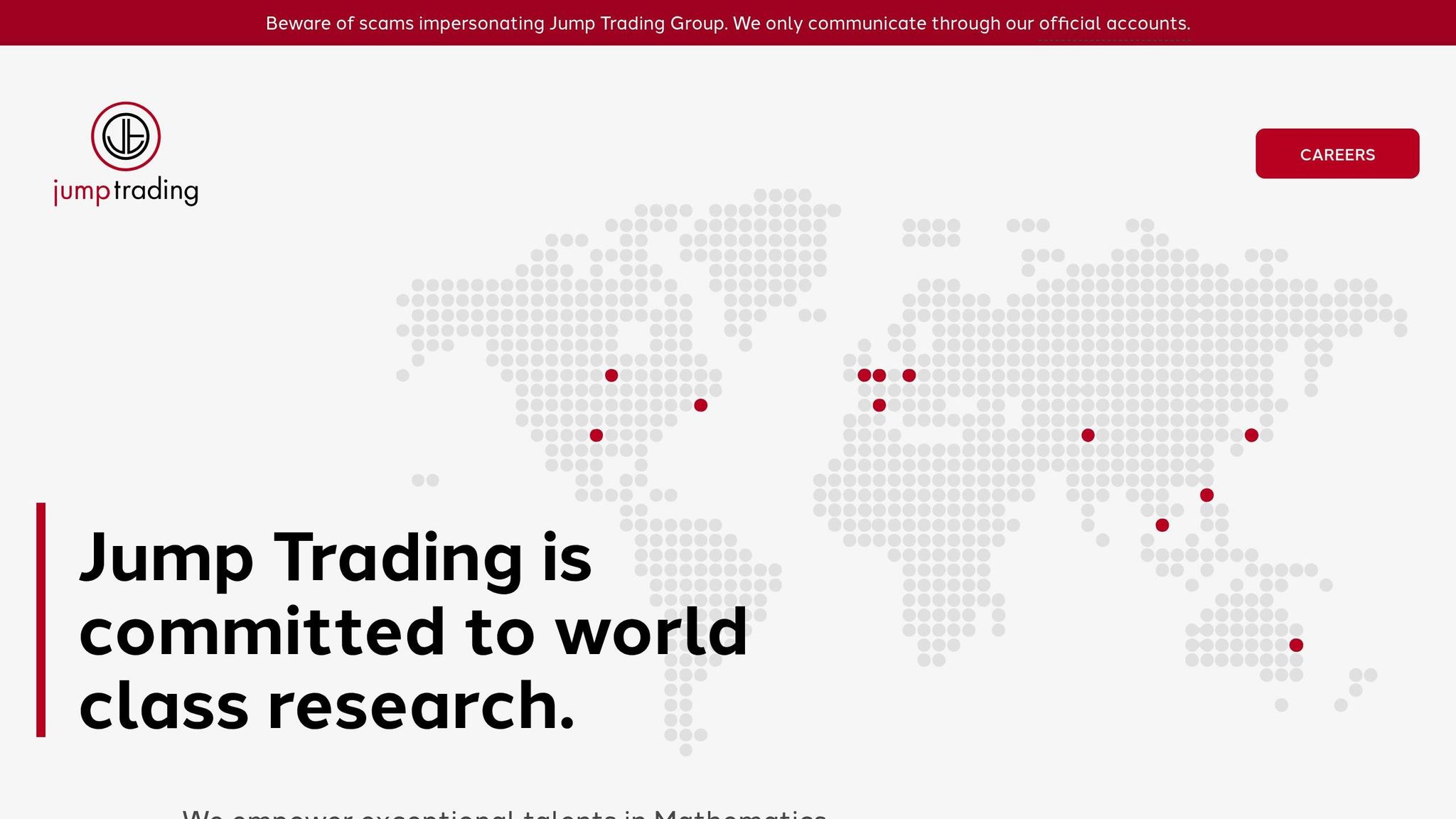
Jump Trading has been a leader in high-frequency trading since 1999, leveraging advanced technology and a distinctive approach to quantitative trading to stay ahead of the curve.
At the heart of its operations are cutting-edge DDN QLC systems, which deliver a 10x reduction in processing latency. This allows analysts to execute trades at unparalleled speeds, taking advantage of even the smallest price differences across global markets [2]. CTO Alex Davies highlights the importance of this technology:
"DDN QLC systems are a really important part of that environment to get IO to our researchers as quickly as possible" [2].
The firm employs a decentralized management model, enabling quantitative analysts to work independently and process data in parallel [2]. This structure supports rapid decision-making and efficient operations.
Risk management is a cornerstone of Jump Trading’s strategy. The company employs real-time monitoring, conducts regular stress tests under extreme scenarios, and diversifies its trading strategies to mitigate potential risks.
Jump Trading’s commitment to research and development ensures continuous improvements in algorithmic strategies, the integration of AI and machine learning, and advances in data analysis and low-latency systems. With offices in Chicago, New York, London, and Singapore, the firm maintains round-the-clock market coverage. A dedicated compliance team also ensures adherence to regulations through regular audits.
These technical and operational strategies solidify Jump Trading’s leading position in the ever-evolving high-frequency trading landscape.
2. Virtu Financial
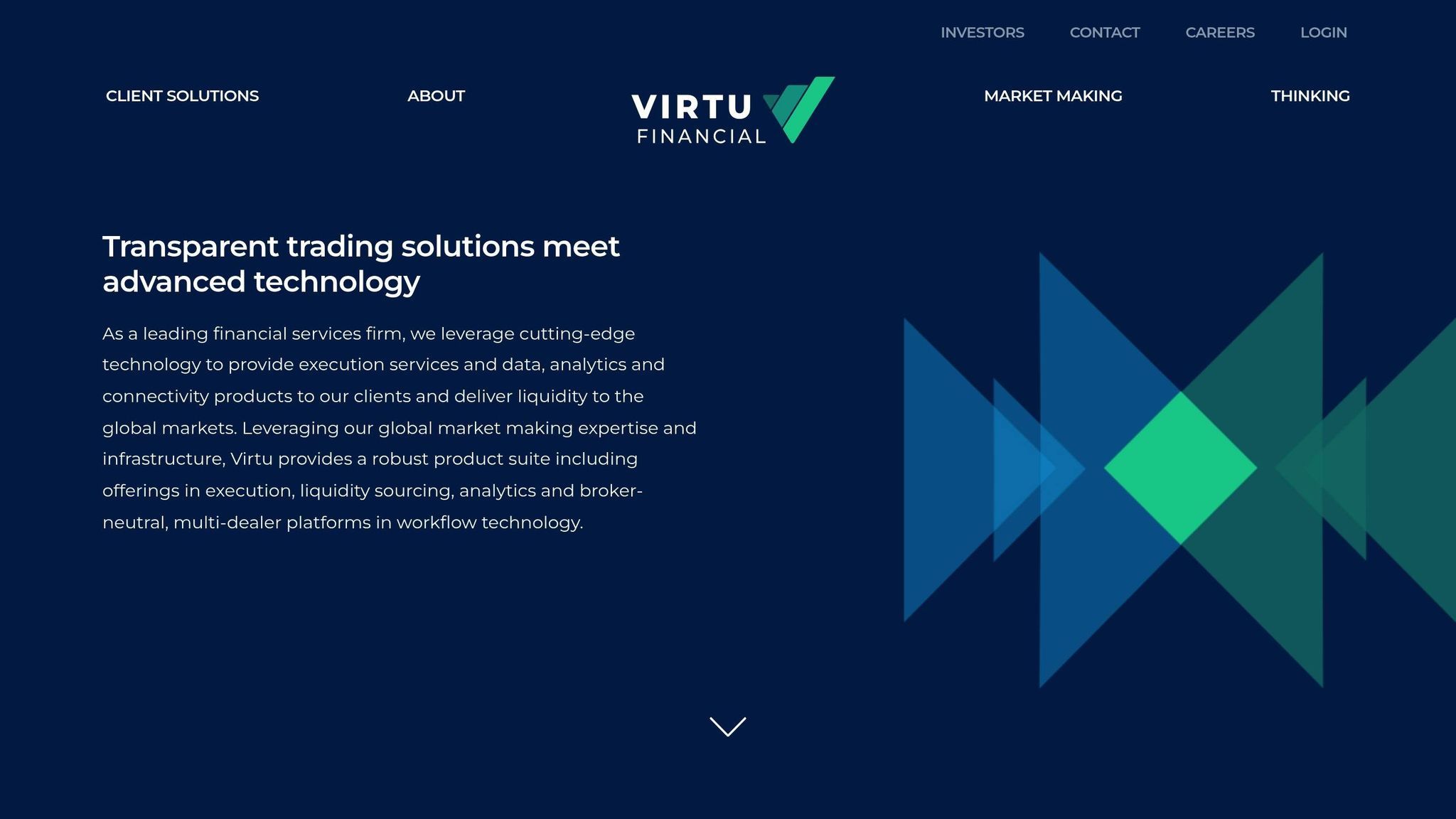
Virtu Financial operates in over 37 countries, providing liquidity for more than 25,000 securities across 235 trading venues [3]. Their infrastructure connects to over 60 global markets and supports 10,000+ broker FIX connections [5]. This extensive network forms the backbone of their advanced trading tools.
"We combine our market structure expertise and execution technology to provide deep liquidity to our clients while creating more efficient and stable markets worldwide." – Virtu Financial Inc. [3]
Key Features of Virtu’s Technology
- Smart Order Router (SOR): Uses advanced routing and posting logic to find the best prices across multiple light and dark venues [6].
- Best Market Server (BMS): Optimizes orders for inter-listed securities between U.S. and Canadian markets by factoring in current FX rates [6].
- Prism Platform: Offers real-time oversight of algorithmic trading and smart routing processes [6].
Virtu’s market-making strategy is all about tailored solutions. They provide liquidity services across multiple asset classes, including equities, ETFs, fixed income, FX, and metals [3][4]. Acting as the sole counterparty in their transactions [4], Virtu ensures full control over both transaction quality and risk management.
"The breadth of capabilities within our internal broker-dealer framework is incredible. I don’t think there’s a vendor on the street that can offer the range and quality of products we’re bringing to market." – Michael Loggia, Global Head of VTS and Workflow Solutions [5]
Virtu’s systems are compatible with most major OMS/EMS platforms, and their Open Technology Platform offers APIs for seamless data access [3]. Through Virtu Technology Solutions (VTS), they extend their infrastructure to sell-side brokers, enabling access to the same tools and capabilities that support their broker-dealer operations [5].
3. Tower Research Capital
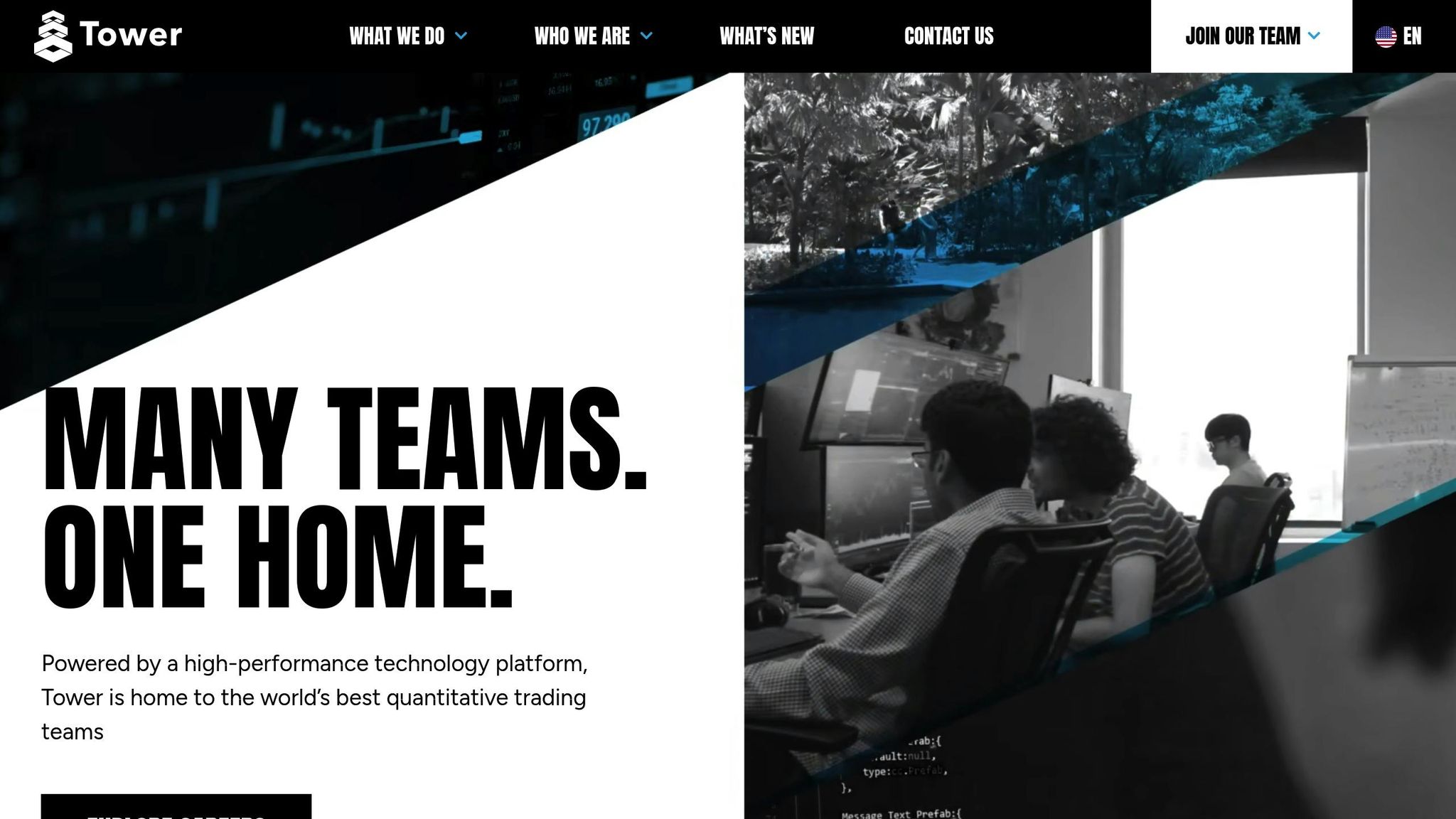
Founded in 1998, Tower Research Capital employs 1,200 professionals worldwide and reported $750 million in revenue as of January 2025 [10].
Technology Infrastructure
Tower operates much like a software company, focusing on technology to improve its trading systems. Its infrastructure includes:
- Systems for accessing market data
- Tools for analyzing trends
- Platforms for trading simulations
- Order entry and management systems
- Post-trade processing services
The firm manages an impressive 100 petabytes of data across multiple colocation centers worldwide. It relies on programming languages like C++, Python, and Rust [9]. Engineers and traders collaborate closely to fine-tune systems and minimize latency.
"Technology is one of our biggest advantages over the competition." – Tower Research Capital [9]
This tech-driven approach has allowed the company to expand its market presence significantly.
Market Presence and Growth
In September 2023, Tower Research Capital moved its global headquarters to 120 Broadway in Manhattan, occupying 122,000 square feet of office space [10]. Through its investment division, Tower Research Ventures, the company actively supports fintech startups. Notable investments include:
- $7 million Series A funding for Sk3w Technologies (July 2023) [10]
- $2 million pre-seed funding for CaseBlink (March 2025) [11][12]
Organizational Structure
Tower’s structure allows its trading teams to operate independently while benefiting from shared technology resources and support services [8].
"Through a unique combination of talent, technology, and culture, we innovate and strive for success in all we do." – Tower Research Capital [7]
One of its subsidiaries, Latour Trading, previously handled 9% of U.S. stock trading volume, showcasing Tower’s influence in high-frequency trading [8].
This collaborative yet decentralized model powers all of Tower’s trading operations.
Trading Capabilities
Tower employs automated and quantitative strategies across various asset classes globally. These strategies reinforce its position as a leader in high-frequency trading [8].
sbb-itb-7b80ef7
4. XTX Markets
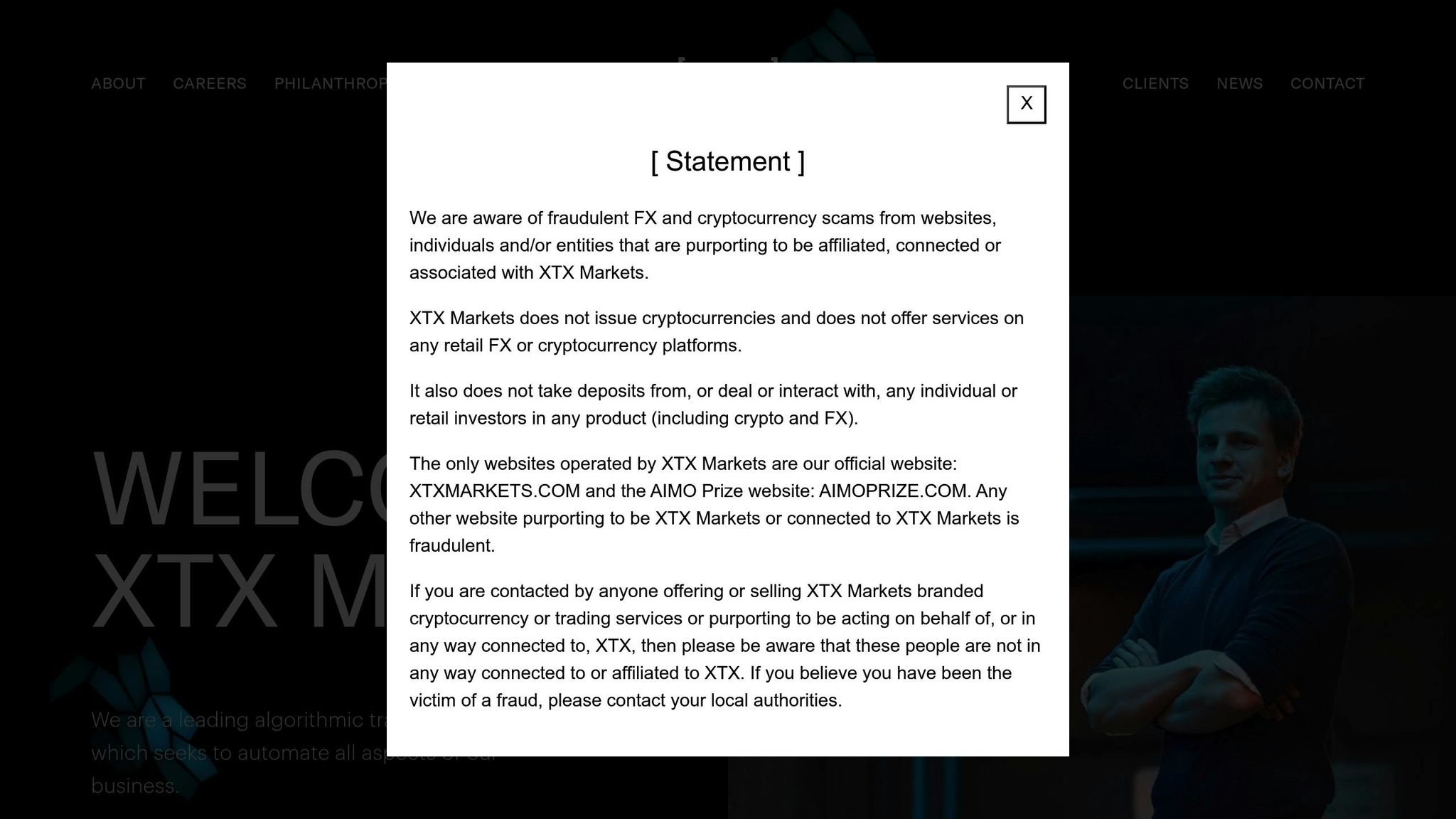
XTX Markets is a leader in algorithmic trading, handling an impressive $250 billion in daily trading volume as of 2025 [13]. The company relies on fully automated systems and advanced quantitative strategies to operate efficiently.
Technology Infrastructure
XTX Markets’ tech setup is nothing short of massive:
- 400 petabytes of storage
- 8.5 petabytes of RAM
- 25,000 high-performance GPUs
- 15 megawatts of renewable power
These systems are designed to handle enormous volumes of real-time market data. James from Exchange Trading Development highlights the scale and precision needed:
"Our systems have to be able to process an incredible amount of incoming data in real-time without queueing, with market data from major exchanges frequently amounting to tens of gigabits per second. We’ll use whatever is the best tool for the job, although our favorite languages are C++ and Python." [13]
This infrastructure forms the backbone of XTX Markets’ success and its strong foothold in the trading industry.
Market Presence
Thanks to its advanced systems, XTX Markets has carved out a leading position across several markets [13]:
| Market Segment | Achievement |
|---|---|
| FX Trading | Ranked among the top 3 liquidity providers for e-Spot/Forwards (2016–2022) |
| European Equities | Holds an 18% share in the pan-European lit cash equities market (FY2022) |
| Systematic Internalization | Leading European ELP by trading volume (2020–2024) |
Research and Development
In February 2025, XTX Markets took bold steps in research and development [15]:
- Partnered with Prior Labs to work on TabPFN, a high-performance tabular foundation model.
- Invested in Prior Labs’ €9 million pre-seed funding round through XTX Ventures.
The quant research team plays a critical role in driving innovation. Dmitry from Quant Research explains their approach:
"The quant research team is responsible for the design and estimation of the statistical models behind all of our trading. This is a very challenging task due to the highly competitive and continuously changing nature of financial markets. The data we use consist of trillions of noisy observations. To make sense of it, we deploy state-of-the-art machine learning techniques and have at our disposal a large cluster of computational resources." [13]
Trading Capabilities
XTX Markets provides liquidity across multiple asset classes, including equities, FX, fixed income, and commodities. Its Execution Algo is designed to execute orders at mid-prices, ensuring efficient and competitive trades [14].
5. Citadel Securities
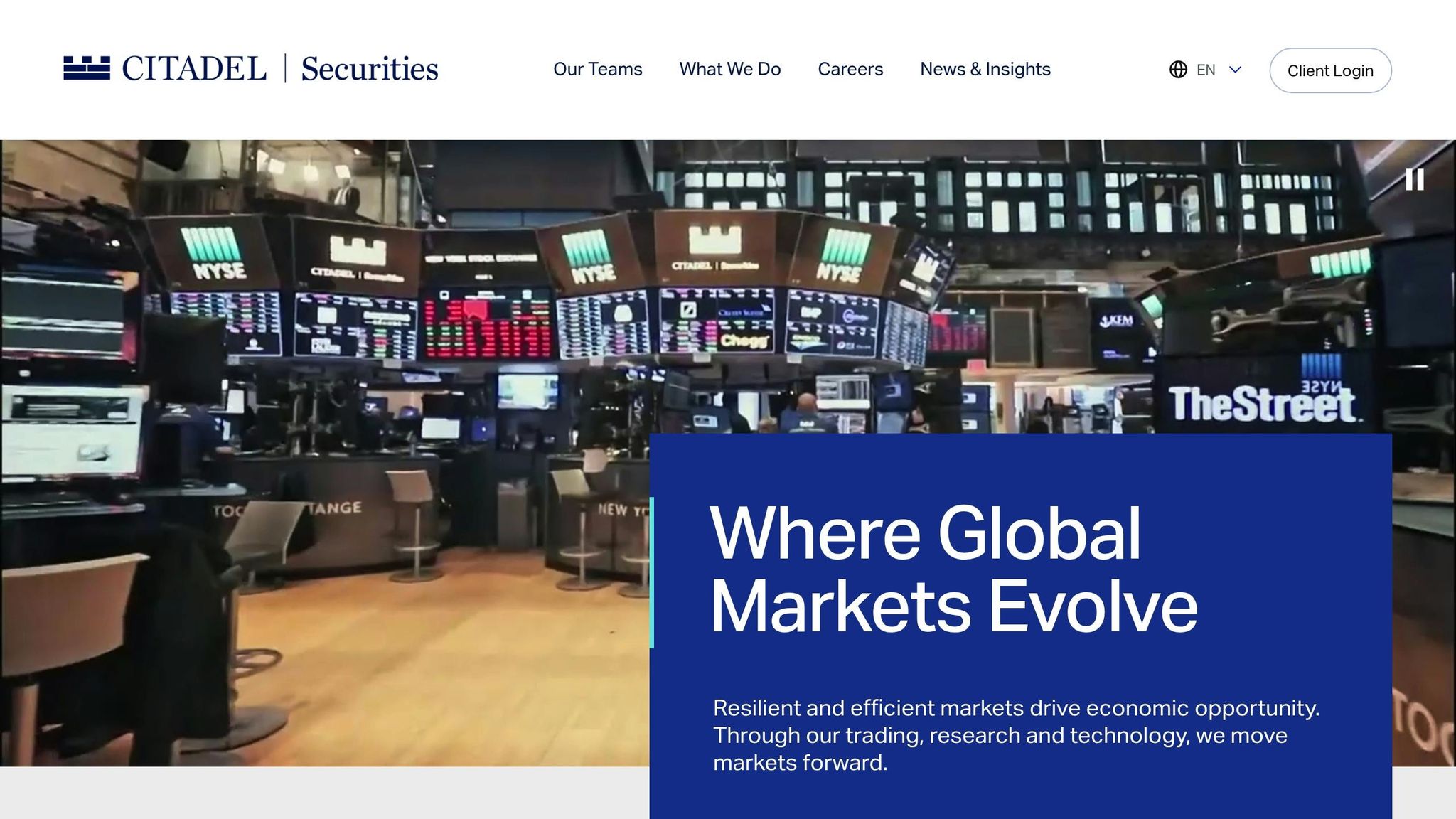
Citadel Securities plays a major role in the financial markets, executing approximately $503 billion in daily trades and managing 35% of U.S.-listed retail trading volume [16]. Its market-making approach combines cutting-edge technology, a highly skilled team, and a focus on efficiency.
Technology and Infrastructure
Citadel Securities owes much of its success to its advanced technology and infrastructure. Here’s a breakdown of its key components:
- Analytics Platform: Uses predictive models for real-time pricing.
- Trading Systems: Capable of pricing hundreds of thousands of securities simultaneously.
- Scalable Infrastructure: Supports operations across multiple markets.
- Risk Management: Relies on sophisticated tools to monitor and control market exposure.
A Team of Experts
The firm’s workforce is packed with talent – 45% hold advanced degrees, and their roster includes nearly 260 PhDs from 40 different disciplines [16]. This diverse expertise helps Citadel Securities navigate the complexities of modern markets with precision.
Recognized for Market Making
Citadel Securities has been honored with the Risk Awards Flow Market Maker of the Year title seven times between 2017 and 2024 [16]. A senior trader highlighted their collaborative approach:
"We value winning as a team and are set up to do just that. We are in constant communication throughout the day and work closely with quantitative researchers and engineers – not just other traders" [18].
Broad Trading Operations
The firm’s trading activities cover a variety of asset classes, including:
- Equities and ETFs: A dominant force in U.S. retail market making.
- Options: Advanced capabilities in derivatives trading.
- Fixed Income: Comprehensive coverage of the bond market.
- Currencies: Active in global forex markets.
In 2021, these operations saved retail investors $1.4 billion [19].
Focus on Innovation
Citadel Securities stays ahead through continuous development and innovation. Key areas include:
- Predictive Analytics: Leveraging models to anticipate market trends.
- Systems Design: Simplifying complexity while staying adaptable to changing conditions.
- Risk Management: Using advanced tools to manage exposure effectively.
Their agile engineering teams utilize distributed computing, natural language processing (NLP), and machine learning for quick and efficient development [17]. In a highly competitive market, staying innovative and analytical is essential for delivering strong outcomes for investors [19].
Firm Comparison
This section compares the trading conditions, support systems, and technological capabilities of the featured firms.
Trading Conditions and Support
| Firm | Market Coverage | Infrastructure | Risk Management |
|---|---|---|---|
| Jump Trading | Global markets, multi-asset | DDN QLC systems, reduced latency | Real-time monitoring, stress testing |
| Virtu Financial | 37 countries, 25,000+ securities | Smart Order Router, Best Market Server | Sole counterparty control |
| Tower Research Capital | Global presence, multiple assets | 100 petabytes data infrastructure | Independent team structure |
| XTX Markets | Pan-European, FX, commodities | 400 petabytes storage, 25,000 GPUs | Advanced statistical modeling |
| Citadel Securities | 35% U.S. retail volume | Predictive analytics platform | Sophisticated monitoring tools |
Technology Investment and Innovation
Here’s how these firms stand out when it comes to technology:
- Infrastructure Scale: Tower Research operates with 100 petabytes of data infrastructure, while XTX Markets boasts 400 petabytes of storage and 25,000 GPUs, showcasing their computational strength.
- Execution Systems: Virtu Financial uses tools like the Smart Order Router and Best Market Server, while Jump Trading focuses on DDN QLC systems. Citadel Securities leverages a predictive analytics platform for its operations.
- Market Access: Virtu Financial engages with 235 trading venues globally, whereas Citadel Securities dominates with a 35% share of U.S. retail trading, highlighting different approaches to market reach.
Each firm’s technology choices are tightly aligned with their trading strategies, from Jump Trading’s parallel processing setup to XTX Markets’ focus on automated, systematic trading [13][16].
Summary and Recommendations
Our review of leading HFT prop firms in 2025 highlights key takeaways for traders looking to make informed decisions.
For Technology-Focused Traders
If you’re prioritizing speed and computational efficiency, XTX Markets stands out. With the ability to process over 120 billion quotes daily [1], it’s a strong choice for traders relying on automated systems and cutting-edge tech.
Profit-Sharing Options
Here’s a breakdown of profit-sharing structures based on experience levels:
| Experience Level | Recommended Firm | Profit Split Structure |
|---|---|---|
| Entry Level | Jump Trading | Up to 75%, performance-based |
| Intermediate | Virtu Financial | 85% after consistent profitability |
| Advanced | Citadel Securities | Up to 90% for top performers |
While profit-sharing is important, the right technological infrastructure can make or break your success. Each firm brings unique strengths to the table:
- Jump Trading: Specializes in parallel processing and robust risk management.
- Virtu Financial: Offers access to 235 trading venues worldwide.
- Tower Research Capital: Operates with a massive 100-petabyte infrastructure.
- XTX Markets: Excels in computational power and efficiency.
- Citadel Securities: Leads with advanced predictive analytics.
